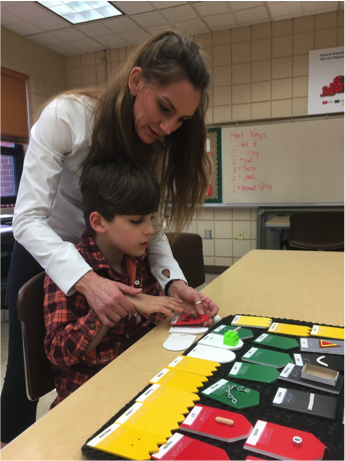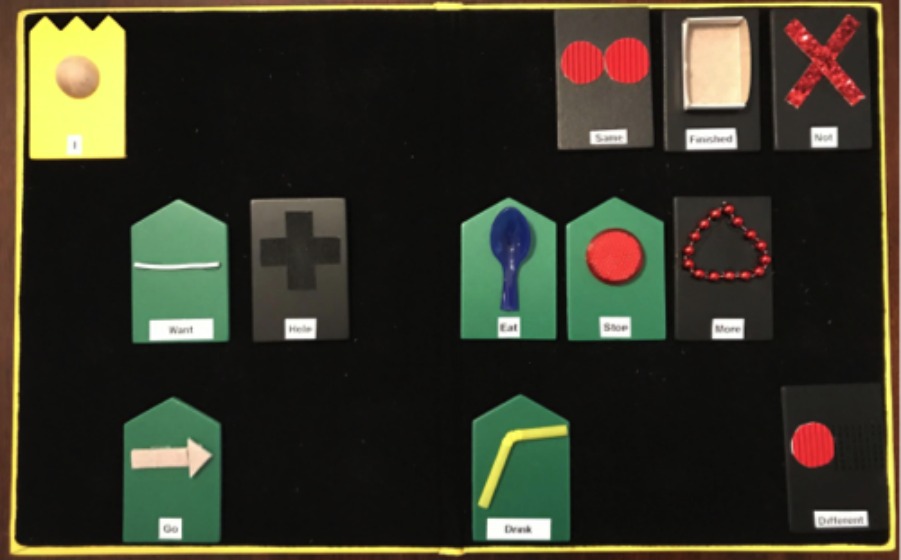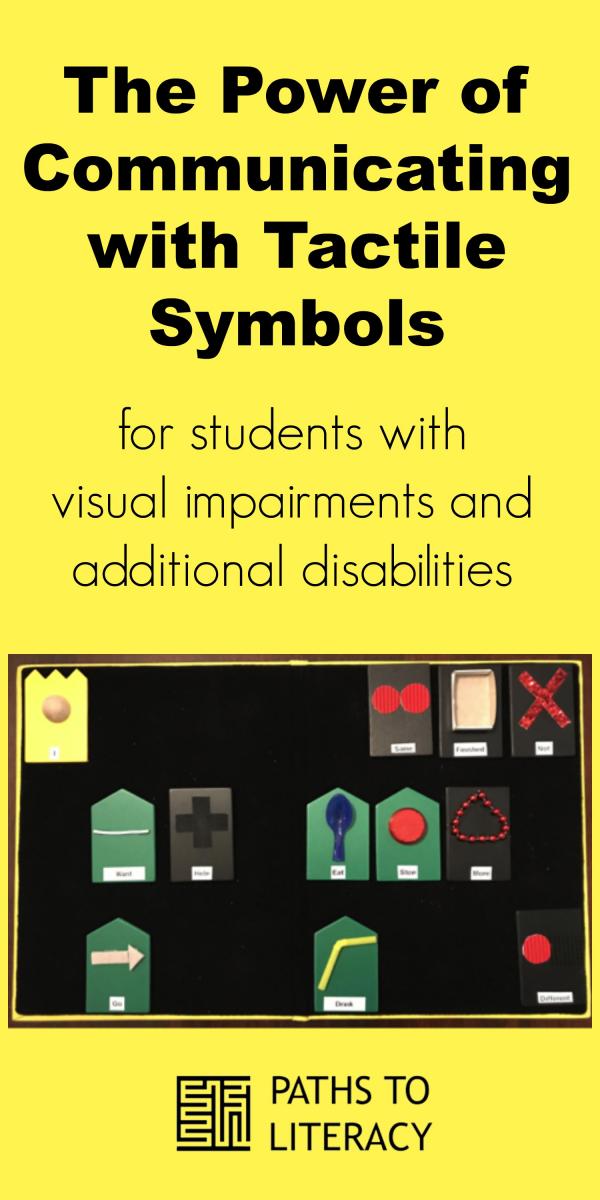The Power of Communicating with Tactile Symbols
 Submitted by Gerald Abner, Clinical Instructor with the Teacher Preparation Program for Visual Impairments and Jasamyn Nichols DeGrant a graduate of the program and Teacher of the Visually Impaired in Clark County Schools
Submitted by Gerald Abner, Clinical Instructor with the Teacher Preparation Program for Visual Impairments and Jasamyn Nichols DeGrant a graduate of the program and Teacher of the Visually Impaired in Clark County Schools
Students who are blind or visually impaired and have complex communication needs due to additional disabilities often lack a formal communication system or a means to access literacy. This is also true of students who are deafblind with additional disabilities.
To help address this issue, the State of Kentucky established a State Personnel Development Grant (SPDG) which is based on federal grants to state departments of education. This particular SPDG is a Low Incidence Initiative designed to improve communication and educational services to students with the most significant disabilities in KY public schools. The grant, Teaching Age-Appropriate Academic Learning via Communication (TAALC), is managed by the Human Development Institute the University of Kentucky. Gerald Abner, Clinical Instructor with the Teacher Preparation Program for Visual Impairments and Jasamyn Nichols DeGrant a graduate of the program and Teacher of the Visually Impaired in Clark County Schools work part time on the grant to help address the needs of those students with visual impairment and complex needs.
Creating a Tactile Communication System
Using the tactile card communication system (Tactile Connections) from the American Printing House for the Blind, Gerald and Jasamyn created tactile symbols on the cards to represent 45 core vocabulary words. They spent a lot of time looking at the Texas School for the Blind’s tactile communication system, which has been developed for years and is very effective: https://www.tsbvi.edu/tactile-symbols.
The Need for Core Vocabulary
The problem they found was that most all symbols were based on nouns, which is considered fringe vocabulary and only used specific to a topic or situation. What was needed was core vocabulary. These are the words used most frequently in our language. By adding the core now students could develop literacy skills as they worked on their communication skills.
This is an example of the TAALC core board (above) adapted to meet the needs of tactile learners with tactile symbols. The tactile symbol version of the core board mirrors the picture symbol core board that is being implemented across the state in communication training materials and resources. Remember when starting with a student, you may need to use a reduced core board with fewer symbols. When doing this make sure you keep the symbols on the core board in the same location. This is important for building motor memory, so the student will become more efficient using their communication system. Below is an example of a reduced core board.

Trey is an example of the TAALC teams work in action. Watch below as we see him read for the first time using tactile symbols with his mom. Trey has no functional vision and is considered blind, along with a diagnosis of autism. His method of communication at the time was echolalia, repeating what others said to him.
Progress Using Tactile Communication Board
Now fast forward 2 years later as we see an example of Trey using his tactile communication board to respond to questions and communicate with his teacher. The echolalia has dramatically decreased, he can respond appropriately to question with an answer and use his tactile symbols to help formulate sentences.
Trey's mother recently wrote:
"I am still amazed by the tactile symbols! When the TAALC program was implemented, I quickly noticed progress. Not only in his path to literacy and communication, but it made a profound difference in calming him when he wasn’t feeling grounded. For example, in the past when he wanted to go somewhere, he would anxiously and repeatedly ask all day long, 'When do we go to...?'"
"Now, he asks for his 'Mimi schedule,' 'MaMaw schedule,' 'dorm schedule,' (or what have you) only one or two times a day. We will then form a sentence with the cards, use other cards to talk about what is on the schedule before his preferred activity, and/or count how many sleeps until said activity.... then he is calm and ready to move on with his day. So It has truly been a game changer with his concept development and orientation to time as well."
How Can I Use Tactile Symbols with My Student?
Now that you have seen the effectiveness of using tactile symbols to support communication in the classroom, you may be wondering, “How can I use these symbols with my student?” Be on the lookout for our next posts. In these posts we will share our experience of adapting symbols to meet the needs of our students with visual impairments.


